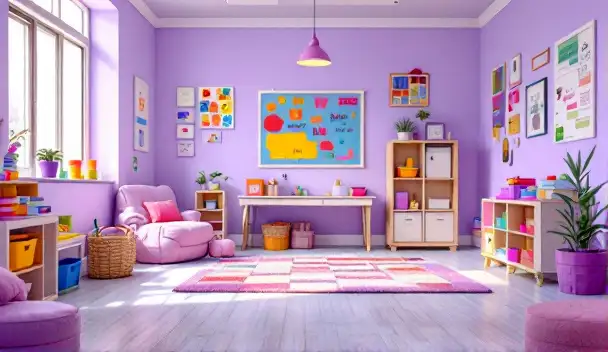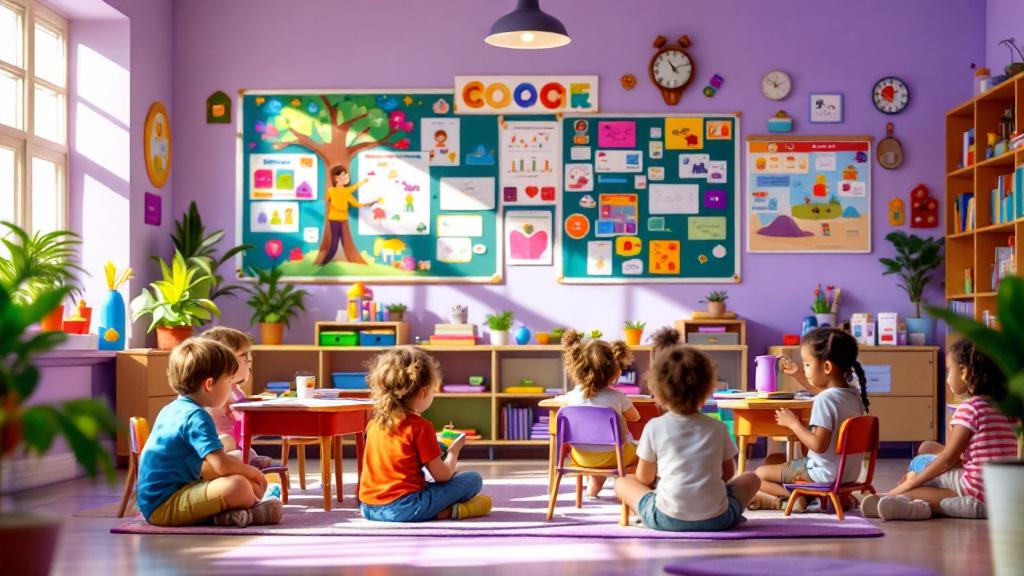Introduction to Home-Based ABA Therapy
Home-based Applied Behavior Analysis (ABA) therapy has emerged as a crucial tool in supporting children with autism spectrum disorder (ASD) to develop effective communication skills. By providing therapy in the comfort of a child’s home, this approach maximizes learning opportunities in a familiar setting, enabling children to practice communication relevant to their daily lives. The integration of strategies such as Functional Communication Training (FCT) ensures these children can express their needs constructively, reducing disruptive behaviors and fostering social interactions.
The Role of Home-Based ABA Therapy

What is the role of Home-Based ABA Therapy in enhancing functional communication skills for children with autism?
Home-Based ABA Therapy plays a crucial role in enhancing functional communication skills for children with autism by providing personalized interventions in a familiar environment. This approach allows children to practice both verbal and non-verbal communication skills relevant to real-life situations.
Techniques used in ABA therapy to enhance communication
Some techniques used in this setting include:
- Verbal Behavior Training: Focuses on teaching children to communicate effectively using words and phrases.
- Functional Communication Training (FCT): Helps replace disruptive behaviors with appropriate communication methods, making it easier for children to express their needs.
- Positive Reinforcement: Encourages children to repeat desired communication behaviors by rewarding their successful attempts.
Impact of therapy on children's social interactions
Additionally, the comfortable home setting reduces anxiety, leading to improved focus and engagement during therapy sessions. This comfortable environment fosters a natural setting for learning, enhancing social skills as children can practice communicating within their family and peer contexts.
Overall, home-based ABA therapy enhances communication skills and promotes better social interactions and daily life activities, providing children with the tools they need to thrive.
Exploring Functional Communication Training (FCT)

What are the methods and strategies of Functional Communication Training (FCT) in ABA therapy?
Functional Communication Training (FCT) is implemented within the framework of Applied Behavioral Analysis (ABA) to effectively teach children to communicate their needs and desires. The training uses various strategies to replace challenging behaviors with appropriate communication methods. Key approaches include:
- Verbal Requests: Encouraging the use of spoken language to express needs.
- Sign Language: Teaching basic signs that can simplify communication.
- Picture Exchange Communication System (PECS): Utilizing pictures to convey messages and requests.
- Choice Boards: Providing visual aids to help children make choices and express preferences.
- Gestures: Incorporating non-verbal communication to enhance understanding.
By focusing on the function of behaviors, therapists identify what drives a child's challenging actions and teach alternative communication strategies that serve the same purpose.
What are the stages of FCT implementation?
The implementation of FCT consists of several critical stages:
- Assessment: Identifying the specific communication needs of the child and behaviors that require replacement.
- Functional Analysis: Understanding the purpose of the child's challenging behaviors to tailor communication strategies effectively.
- Teaching Plan Development: Creating a structured approach to teach the agreed-upon communication methods.
- Intervention: Actively teaching the child to use their new communication skills.
- Generalization: Helping the child apply skills in different settings, such as home and school.
- Maintenance: Ensuring ongoing practice and reinforcement of acquired skills across various environments.
What are the benefits of FCT when combined with ABA therapy?
Combining FCT with ABA therapy offers numerous benefits for children with communication difficulties:
- Improved Communication Skills: Children learn to express their needs effectively, reducing frustration and enhancing their ability to interact.
- Reduction in Problem Behaviors: The focus on appropriate communication methods diminishes the occurrence of disruptive behaviors.
- Increased Independence: Empowering children to communicate fosters a sense of control, leading to greater functional independence.
- Enhanced Social Interactions: Better communication skills contribute to building relationships with peers and family members, advancing social engagement.
- Supportive Learning Environment: FCT fosters inclusion in varied activities, ensuring children can participate fully in their communities.
Overall, the integration of FCT within ABA therapy is designed to provide a comprehensive and effective approach to addressing communication deficits in children, significantly improving their quality of life.
Effectiveness of Home-Based ABA Therapy

How effective is home-based ABA therapy in improving communication skills?
Home-based ABA therapy has proven to be effective in improving communication skills, particularly for individuals with autism. This therapy focuses on teaching individuals how to actively use language to express their needs and interact with their environment, highlighting targeted communication improvement goals.
Research indicates that providing therapy in the home environment enhances skill retention. Children can practice and apply their communication skills in natural settings, which makes learning more relevant and meaningful. The individualized and consistent interventions integrated into daily routines allow families to reinforce these skills effectively at home.
Advantages of a home environment for therapy
In a home setting, the familiar surroundings can reduce anxiety and increase comfort for children. This environment also allows for a more personalized approach, adapting strategies that fit the family’s lifestyle and dynamics.
Additionally, therapy in the home can promote objects and interactions the child is genuinely interested in, which can lead to higher engagement and motivation. This shift from traditional therapy sites to the home can drastically improve the child's responsiveness and participation levels.
Role of family involvement in therapy
Family involvement is critical in home-based ABA therapy. Parents and caregivers play an essential role by practicing techniques, monitoring progress, and reinforcing communication strategies introduced during sessions. This collaborative effort helps ensure consistency, making it easier for children to generalize their skills across various contexts.
The active participation of family members not only supports the child’s development of communication skills but also empowers families with tools to assist their loved ones more effectively. Through these combined efforts, home-based ABA therapy can lead to significant long-term improvements in communication and social interactions.
Supporting Children with Communication Challenges

How ABA therapy addresses communication challenges
Applied Behavioral Analysis (ABA) therapy plays a pivotal role in addressing communication challenges among children, especially those on the autism spectrum. The therapy employs structured and evidence-based techniques tailored to meet individual needs, fostering significant skill acquisition.
ABA therapy breaks down communication skills into smaller, manageable steps. This systematic approach helps children learn effectively, allowing them to absorb and practice each component before progressing.
Various techniques within ABA therapy
Key techniques within ABA therapy include:
- Picture Exchange Communication System (PECS): This method involves using pictures to help children communicate their needs and wants in a visual format, making it easier for them to express themselves.
- Positive Reinforcement: Encouragement and rewards for using appropriate communication skills help reinforce these behaviors, increasing the likelihood that children will continue to use them in the future.
- Speech-Generating Devices (SGDs): Technology like tablet apps and dedicated devices enables children to communicate verbally or through symbols, enhancing their ability to express themselves.
Role of technology and alternative communication methods
Technology plays an integral role in modern ABA therapy. By implementing tools like SGDs and visual supports, therapists can provide children with practical means of communication. These alternatives not only cater to diverse communication needs but also optimize the learning environment, making it more inclusive.
As a result, children equipped with these communication skills can engage more effectively with peers, caregivers, and their community, improving their overall social interactions and quality of life.
Developing Communication Skills for Developmental Challenges

How does ABA therapy assist in developing communication skills for children with developmental challenges?
ABA therapy is a comprehensive approach tailored to meet the individual communication needs of children with developmental challenges. By creating personalized therapy plans, it targets specific areas like delayed speech, social communication difficulties, and non-verbal communication hurdles.
Utilizing methodologies such as Verbal Behavior Therapy (VBT) and Functional Communication Training (FCT), children learn to articulate their needs effectively.
Techniques Utilized in ABA Therapy
| Technique | Description | Benefits |
|---|---|---|
| Verbal Behavior Therapy (VBT) | A focus on teaching functional language through communication needs | Enhances expressive language skills |
| Functional Communication Training (FCT) | Replaces challenging behaviors with communication skills | Promotes social acceptance |
| Positive Reinforcement | Rewards for using new communication skills | Encourages use of effective communication |
Positive reinforcement plays a crucial role in this process. It helps in encouraging children to consistently apply their new communication strategies, paving the way for better social interactions and independence in their daily lives.
Ongoing collaboration among therapists, families, and educators ensures that the skills learned in therapy generalize to home and community settings, resulting in enriched communication skills and a more fulfilled quality of life for children.
The Future of Home-Based ABA Therapy
Potential for Broader Applications
Home-based ABA therapy continues to expand its reach, addressing not only autism spectrum disorder but also a variety of developmental and behavioral conditions. This flexibility opens avenues tailored to individual needs, allowing interventions to adapt more readily to specific communication challenges.
Technological Advancements in ABA Therapy
Innovations in technology play a crucial role in the evolution of home-based ABA therapy. Tools like communication apps, video modeling, and interactive games enhance engagement and provide caregivers with effective strategies for reinforcement. These advancements also facilitate remote therapy sessions, ensuring continuity as families navigate busy schedules.
Increasing Accessibility for Families
As telehealth options grow, home-based ABA therapy becomes more accessible for families. Insurance coverage improvements and availability of trained therapists online make it easier to obtain services. This increased accessibility not only supports families financially but also fosters better communication skills and independence in children.
Conclusion
Home-based ABA therapy, by integrating Functional Communication Training (FCT) and other tailored strategies, plays an invaluable role in enhancing communication skills among children with autism and other developmental challenges. The therapy’s adaptability to the home environment not only facilitates stronger skill acquisition but also supports families in being active participants in their child's developmental journey. By focusing on individualized approaches and continuous reinforcement, home-based ABA therapy has the potential to unlock significant improvements in communication, social interactions, and independence, paving the way for a more inclusive and fulfilling future for children with developmental disorders.
References
- Functional Communication Training (FCT) in ABA Therapy
- Home based ABA therapy - Arise Autism Center
- Bridging the Gap: Functional Communication in ABA
- Functional Communication Training (FCT) in ABA Therapy
- Understanding Functional Communication Training in ABA
- Benefits of Functional Communication in ABA Therapy
- Functional Communication Training (FCT) in ABA Therapy
- Why Home-based ABA Therapy Is A Gamechanger
- How ABA Therapy Can Improve Communication Skills in Children





































































































